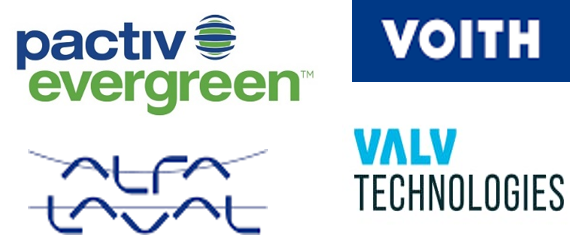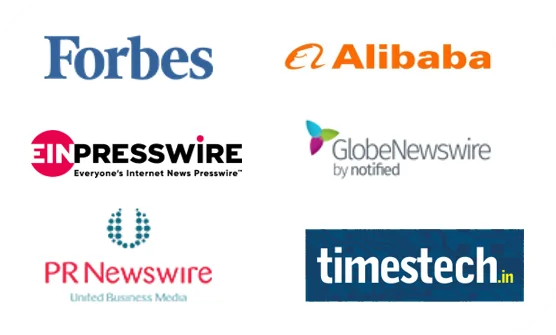Market Overview:
"The global wafer bonder and debonder market was valued at US$ 1.3 billion in 2024 and is expected to register a CAGR of 6.6% over the forecast period and reach US$ 2.3 billion in 2033."
|
Report Attributes |
Details |
|
Base Year |
2024 |
|
Forecast Years |
2025-2033 |
|
Historical Years |
2022-2023 |
|
Wafer Bonder and Debonder Market Growth Rate (2024-2032) |
6.6% |
A wafer bonder and debonder are specialized machines used in the semiconductor industry for bonding and debonding of semiconductor wafers. Wafer bonder is a machine that facilitates permanent bonding of two or more wafers together, typically using adhesive or thermal bonding techniques. This process is crucial for various applications, such as fabrication of stacked integrated circuits, Micro-Electromechanical Systems (MEMS) devices, and advanced packaging. On the other hand, a wafer debonder is used to separate bonded wafers, allowing for subsequent processing or rework.
The debonding process involves removal of adhesive or other bonding materials, ensuring safe and precise separation of wafers without causing damage.
Wafer bonders and debonders are critical tools in semiconductor manufacturing, enabling production of advanced devices with higher integration, improved functionality, and enhanced performance. Primary function of a wafer bonder and debonder is to bond and separate semiconductor wafers used in the manufacturing of integrated circuits and microelectronics.
In addition, advancements in wafer bonding and debonding technology, such as improved alignment accuracy, enhanced bonding materials, and advanced handling systems, are driving market revenue growth. Government initiatives supporting semiconductor Research and Development (R&D), compliance with industry standards, and environmental regulations are further contributing to market revenue growth.
Wafer Bonder and Debonder Market Trends and Drivers:
Increasing Semiconductor Demand: Rising demand for advanced semiconductor devices, including microprocessors, memory chips, and sensors, is driving need for efficient wafer bonding and debonding processes. Expanding applications of semiconductors in industries such as automotive, consumer electronics, and healthcare positively impact market revenue growth.
Advancements in Wafer Bonding Technologies: Technological advancements in wafer bonding techniques, such as adhesive bonding, thermo-compression bonding, and direct bonding, improve efficiency, precision, and reliability of the bonding process. These advancements enhance the overall performance of semiconductor devices and drive market revenue growth.
Miniaturization and 3D Integration: Rising trend towards smaller and more powerful electronic devices necessitates advanced wafer bonding and debonding techniques to achieve compact 3D integration. Ability to stack and integrate multiple layers of wafers enables higher functionality and performance, supporting market revenue growth.
Emergence of Advanced Materials: Development of new bonding materials, such as advanced adhesives and polymers, enhances bonding strength, thermal stability, and electrical conductivity. These materials enable bonding of diverse substrates and facilitate production of innovative semiconductor devices, contributing to market revenue growth.
Increasing Research and Development Investments: Continuous investments in research and development by semiconductor manufacturers and research institutions result in advancements in wafer bonding and debonding technologies. High focus on development of next-generation semiconductor devices and manufacturing techniques is creating revenue growth opportunities for manufacturers and this is driving market revenue growth.
Wafer Bonder and Debonder Market Restraining Factors:
High Initial Investment: Wafer bonding and debonding equipment often require substantial upfront investment, which can be a challenge for Small and Medium-Sized Enterprises (SMEs) or those with limited budgets. High cost of equipment, specialized materials, and need for skilled personnel can limit market entry and hamper market revenue growth.
Complex Process and Skill Requirements: Wafer bonding and debonding processes involve precision handling and control to ensure successful outcomes. Complexity of these processes requires trained personnel with specialized skills and expertise and shortage of skilled professionals can pose challenges and restrain market revenue growth.
Technological Limitations: While there have been advancements in wafer bonding and debonding technologies, there are certain limitations. Challenges related to bonding strength, uniformity, and process compatibility with new materials or structures can negatively impact market revenue growth. Overcoming these technological limitations is crucial to drive high adoption of wafer bonding and debonding solutions.
Integration Challenges: Integrating wafer bonding and debonding equipment into existing semiconductor fabrication workflows can be challenging. Compatibility issues, process synchronization, and need for seamless integration with other equipment can lower adoption of the product and hamper revenue growth of the global wafer bonder and debonder market.
Wafer Bonder and Debonder Market Opportunities:
Increasing Demand for Advanced Semiconductor Devices: Rising demand for advanced semiconductor devices, such as high-performance microprocessors, memory chips, and sensors, presents significant revenue growth opportunity for wafer bonder and debonder manufacturers. Increasing need for precise bonding and debonding processes to achieve higher functionality and performance is driving revenue growth of the global wafer bonder and debonder market.
Emergence of New Materials and Substrates: Development of new materials such as compound semiconductors and flexible substrates, is creating new revenue streams for wafer bonder and debonder manufacturers. These materials require specialized bonding and debonding techniques, creating opportunities for innovative solutions and revenue growth of the companies.
Expansion of 5G and Internet of Things (IoT): Deployment of 5G network and rapid adoption of IoT devices is driving adoption of advanced semiconductor components. Wafer bonding and debonding are important in production of these components, providing revenue opportunities for manufacturers in the global wafer bonder and debonder market.
Technological Advancements: Continuous advancements in wafer bonding and debonding technologies offer opportunities for market expansion to global players. Improved precision, higher throughput, and enhanced process control capabilities attract customers seeking advanced solutions and drive market revenue growth.
Collaborations and Partnerships: Collaborations between wafer bonder and debonder manufacturers, semiconductor manufacturers, and research institutions drive innovation and create new revenue streams. Partnering with customers and suppliers to develop customized solutions and addressing specific application needs can lead to long-term revenue growth opportunities.
Expansion in Emerging Markets: Growing semiconductor industry in emerging markets is presenting untapped potential for wafer bonder and debonder manufacturers. Increasing investments in semiconductor manufacturing facilities and preference for localized production capabilities provide avenues for market expansion.
Wafer Bonder and Debonder Market Segmentation:
By Type:
- Manual Wafer Bonders
- Semi-Automatic Wafer Bonders
- Fully Automatic Wafer Bonders
By Technology:
- Eutectic Bonding
- Anodic Bonding
- Fusion Bonding
- Adhesive Bonding
- Others
By Application:
- MEMS Devices
- Power Devices
- Optoelectronic Devices
- RF Devices
- Interposers
- Others
By End-Use Industry:
- Semiconductor
- Electronics
- Automotive
- Healthcare
- Telecommunications
- Others
Wafer Bonder and Debonder Market, By Region:
- North America
- Latin America
- Europe
- Asia Pacific
- Middle East & Africa
In North America, high wafer bonders and debonders market demand in countries such as the United States and Canada is driving revenue growth of the market in this region. Market in this region holds significant market share due to well-established semiconductor industry, continuous technological advancements by major companies operating in the region, and consumer preference for high-quality products.
Asia Pacific is expected to account for considerable market share during the forecast period, with countries such as China, Japan, and South Korea leading in terms of revenue contribution in the market. In addition, strong semiconductor manufacturing base, increasing consumer electronics production, and rapid technological advancements. Moreover, government initiatives supporting industry growth, research collaboration, and development of semiconductor ecosystems is further driving revenue growth of the market in this region.
Europe market share incline is due to high demand for wafer bonders and debonders among end-use industries, particularly in countries such as Germany, the United Kingdom, and France. Growing semiconductor industry and presence of various well-established consumer electronics, automotive, and industrial industries are driving product consumption. Developments in automation, industry 4.0, and government initiatives are other major factors supporting innovation and contributing to revenue growth of the market in this region.
Leading Companies in Wafer Bonder and Debonder Market & Competitive Landscape:
The global wafer bonder and debonder market features a landscape with several key players vying for market share. Major companies focus on product innovation, research and development, and strategic partnerships to gain a competitive edge. These companies aim to offer advanced wafer bonding and debonding solutions that provide high precision, reliability, and efficiency. In addition, the market is characterized by the presence of both established companies with a long-standing reputation and emerging players aiming to disrupt the market with innovative technologies and competitive pricing strategies.
Company List:
- EV Group
- SUSS MicroTec SE
- Tokyo Electron Limited
- Applied Materials, Inc.
- ASM International N.V.
- Kulicke & Soffa Industries, Inc.
- Shinkawa Ltd.
- Palomar Technologies, Inc.
- Besi
- Dynatex International
- Panasonic Corporation
- Shibaura Mechatronics Corporation
- Semsysco GmbH
- SET Corporation
- Toray Engineering Co., Ltd.
Research Scope:
|
Report Metric |
Report Details |
|
Wafer Bonder and Debonder Market Size available for the years |
2022-2033 |
|
Base Year |
2024 |
|
Forecast Period |
2025-2033 |
|
Compound Annual Growth Rate (CAGR) |
6.6% |
|
Segment covered |
By Type, Technology, Application, End-Use Industry, and Region |
|
Regions Covered |
North America: The U.S. & Canada Latin America: Brazil, Mexico, Argentina, & Rest of Latin America Asia Pacific: China, India, Japan, Australia & New Zealand, South Korea, ASEAN, & Rest of Asia Pacific Europe: Germany, The U.K., France, Spain, Italy, Russia, Poland, BENELUX, NORDIC, & Rest of Europe The Middle East & Africa: Saudi Arabia, United Arab Emirates, South Africa, Egypt, Israel, and Rest of MEA |
|
Fastest Growing Country in Europe |
Germany |
|
Largest Market in Asia Pacific |
China |
|
Key Players |
EV Group, SUSS MicroTec SE, Tokyo Electron Limited, Applied Materials, Inc, ASM International N.V., Kulicke & Soffa Industries, Inc., Shinkawa Ltd., Palomar Technologies, Inc., Besi, Dynatex International, Panasonic Corporation, Shibaura Mechatronics Corporation, Semsysco GmbH, SET Corporation, Toray Engineering Co., Ltd. |
Frequently Asked Question
What is the size of the global wafer bonder and debonder market in 2024?
The global wafer bonder and debonder market size reached US$ 1.3 billion in 2024.
At what CAGR will the global wafer bonder and debonder market expand?
The global wafer bonder and debonder market is expected to register a 6.6% CAGR through 2025-2033.
How big can the global wafer bonder and debonder market be by 2033?
The market is estimated to reach US$ 2.3 billion by 2033.
How is the global wafer bonder and debonder market report segmented?
The global wafer bonder and debonder market report segmentation is based on type, technology, application, end-use industry, and region.
Who are the key players in the global wafer bonder and debonder market report?
EV Group, SUSS MicroTec SE, Tokyo Electron Limited, Applied Materials, Inc, ASM International N.V., Kulicke & Soffa Industries, Inc., Shinkawa Ltd., Palomar Technologies, Inc., Besi, and others.

